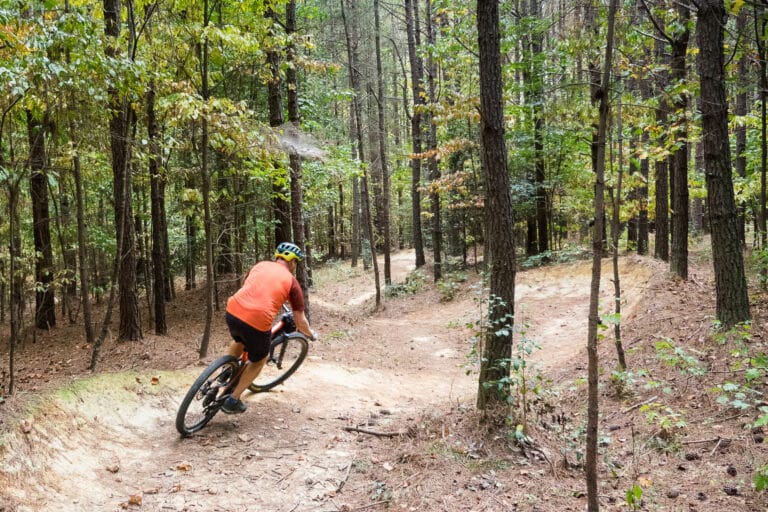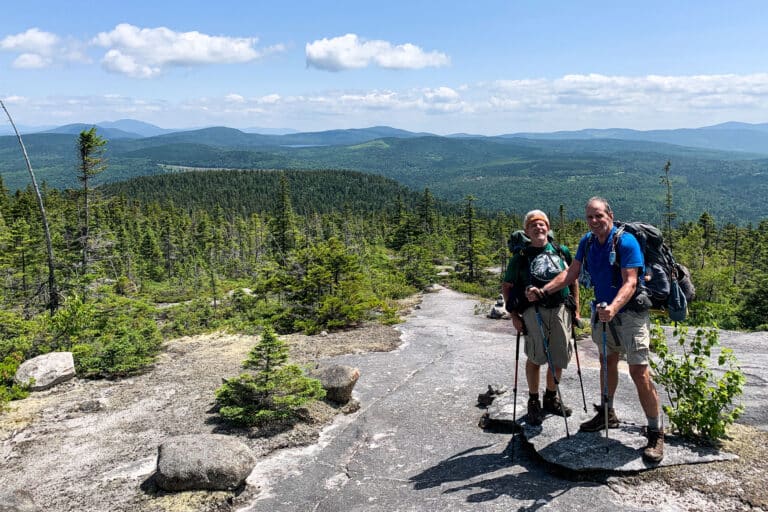Instead of condos, a biologist builds wetlands behind his house
What was once a lovely sloping green lawn tucked behind Matt Mullen’s West Asheville neighborhood will soon be an oasis for water-loving wildlife: a wetlands twenty yards from his back porch.

Mullen is building a three-pond micro-wetlands that will not only beautify the neighborhood but also provide crucial stormwater management in an area that has been prone to flash-flooding in recent years. A one-inch rainstorm, Mullen says, can send 725,000 gallons of water through his yard.
By the time he’s done with the grading, lining, mulching, and planting, Mullen—who works as a geotechnical engineer with the North Carolina DOT—will have put around $25,000 of his own money into the project. A grant from the Community Conservation Assistance Program (CCAP) will pay back 80% of his construction costs. Those monies will come from the Clean Water Trust Fund, which requires developers who have destroyed wetlands to replace them or pay into the fund.
Mullen’s project won’t restore a former stream or swamp, but it will replace another drainage somewhere else that’s been compromised.
“Most bogs, swamps, and wetlands in the area have been drained and turned into golf courses or parking lots. The idea is to replace something that’s missing more than reconstructing something that used to be here.”
In addition to providing a haven for native plants and endangered wildlife, wetlands play a crucial role in mitigating the impact of pollutants. Wetlands plants are remarkably efficient at removing contaminants from stormwater. The water leaving a wetlands is almost always cleaner than the water coming in.
“It’s going to make a difference in the quality of the runoff that enters Smith Mill Creek downstream, which has big problems.”
Mullen admits there are some drawbacks to his plan. First is the time commitment: the grant obligates him to keep the area mulched and the ponds free of garbage. He’ll also need to monitor and mitigate the mosquito population; he doesn’t want the project tagged as Encephalitis Gardens. Then there is the financial commitment; in addition to the thousands of dollars he’s already committed to the project, he’s lost any chance he had of throwing down a few prefab duplexes on the lot and living off the rent.
“I have dispatched developable land in an effort to show the community that my wife and I are interested in having a leadership role in this being open space back here, and not being developed. There’s a drawback to that. The money side of that is very real. But we’re committed to doing it, and I feel like it’s going to pay a lot on the backside, in all sorts of ways.”
After he completes this project, he hopes to team with a grant writer to plan and develop more local wetlands.
“This project is signaling a cultural identity change around here, from This is a drainage ditch to This is the headwaters of a stream.” A stream, Mullen hopes, with fewer contaminants, fewer baby diapers, and a few more frogs.







